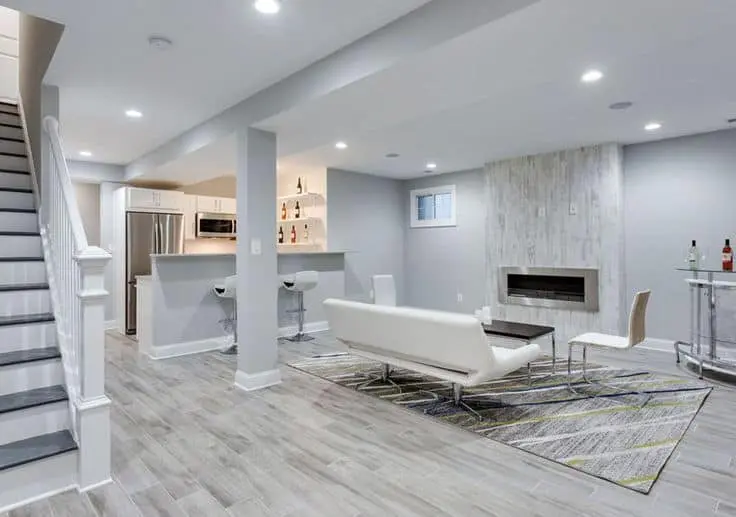Future-Proof Your Home for a Suite: Key Upgrades to Consider

Planning Ahead
Adding a secondary suite to your home can be a great way to create a new income stream or additional living space for family members. A secondary suite, sometimes called an in-law suite or accessory dwelling unit (ADU), is a self-contained housing unit with its own kitchen, bathroom, living area, and separate entrance. These units can be created through renovating and repurposing existing spaces like basements or garages.
There are many benefits to adding a secondary suite, such as:
- Increased income potential from renting out the suite
- More flexibility if you have parents or adult children living with you
- Making efficient use of unused or underutilized space in your home
- Providing more affordable housing options in your neighborhood
However, building a new secondary suite from scratch can be costly. That’s why future-proofing for a potential secondary suite when renovating or building a new home is wise. Making small upgrades now like enhancing plumbing, electrical, heating, and fire protection systems means you save time and money down the road if you do add a suite.
Future-proofing also provides resale value, as a home ready for a suite will appeal to buyers interested in rental income potential. Considering how to access the suite from outside and allot space for a kitchen are key when future-proofing. Building codes and zoning bylaws around secondary suites should also be reviewed before renovating or building.
With strategic planning and smart investments, you can future-proof your home today for an easy transition to a legal, safe, and comfortable secondary suite tomorrow. This helps you maximize the possibilities of your property.
Upgrading the Concrete Pad of Your Garage
The concrete pad of your garage needs to be high-quality and level if you want to convert part of it into a secondary suite. An uneven or cracked garage floor will lead to problems down the road.
When assessing your existing concrete pad, check for major cracks, pitting, crumbling edges and significant slopes or uneven spots. If the issues are minor, you may be able to correct them with grinding or a concrete overlay. But major problems will require replacing the concrete completely.
Pouring a new concrete pad for your garage is the best way to ensure it will properly support a secondary suite. This involves demolishing and removing the existing pad, compacting the soil beneath, installing proper drainage and vapor barriers, running conduit for future wiring, and pouring new reinforced concrete.
Though more costly upfront, a freshly poured pad will last for decades and provide the ideal base for a secondary suite. The smooth, level surface will enable you to install flooring of your choice. And you won’t have to worry about cracking issues or settling over time.
Other options for upgrading an existing concrete pad include:
- Mudjacking – Injecting a slurry mix under sunken sections to lift and level them. This can correct minor settling issues.
- Grinding – Using a specialized grinding machine to smooth out small cracks and level any uneven spots. Best for minor imperfections.
- Concrete overlay – Pouring a new layer of concrete over the existing pad to create a smooth, durable surface. Can correct moderate flaws.
Carefully inspecting your garage’s concrete pad and choosing the right method for upgrading it is a key first step in adding a legal and livable secondary suite. A quality foundation will set your project up for long-term success.
Expanding the Mechanical Room
The mechanical room is where important utilities like the water heater, furnace, and electrical panel are located. When creating a secondary suite, it’s crucial to ensure your mechanical room can support the additional demand.
You’ll likely need to upgrade the electrical capacity to power the extra lights, outlets, appliances, and electronics in the suite. Consult an electrician to determine if your current electrical panel can handle the increased load or if you’ll need a larger panel installed. They can advise on the amperage required.
Space planning is also an important consideration. Make sure there is adequate room to install a second water heater for the suite. You may also need a separate HVAC system with its own furnace and air conditioner, which requires floor space as well. A tight mechanical room can quickly become overcrowded.
Expanding the mechanical room into an adjacent unfinished area of the basement is often the easiest approach. This creates space for the additional water heater and HVAC equipment needed for the suite. If the mechanics are on an exterior basement wall, building out with an addition may be required to provide more interior floor area.
Planning ahead for a larger mechanical room ensures your home’s systems can support the increased demand down the road. It provides a clean starting point for the necessary electrical and plumbing work, saving on costs compared to retrofitting a crowded space later on. With the right upfront upgrades, your mechanical room will be ready to power and service the new secondary suite when the time comes.
Enhancing Sound and Fire Protection
When building a secondary suite, it’s important to consider sound and fire protection between the main home and the suite. Here are some key techniques to enhance protection:
- Install resilient channels on the studs and then attach drywall. Resilient channels decouple the drywall from the studs, reducing sound transmission.
- Use double drywall on shared walls and ceilings. Staggering the drywall joints and using two layers greatly reduces sound transmission.
- Seal all penetrations in walls and ceilings, such as electrical boxes, plumbing, and ducting. Use acoustic sealant to fill gaps and prevent sound flanking.
- Use doors with solid cores and weatherstripping seals to reduce sound transmission.
- In some cases, adding insulation in walls and ceilings can dampen sound, but its effectiveness depends on construction methods.
- For flooring, choose options with sound dampening like carpet or cork rather than hard surfaces.
- Close off and seal shared ductwork openings to prevent noise transfer.
It’s also important to meet fire protection requirements between the main home and suite:
- The building code requires a 1 hour fire separation for the shared wall and ceiling between units.
- Fire-rated drywall or 2 layers of drywall on each side assists in achieving the 1 hour rating.
- Fire-rated doors are required, with self-closing hardware.
- Penetrations in fire separations must be sealed with fire-rated materials.
With careful planning and construction using best practices, you can achieve excellent sound and fire protection for a legal and comfortable secondary suite. Consulting with an architect or engineer is recommended to ensure proper installation.
Plumbing and Electrical Rough-Ins for Future Kitchen/Laundry
When future-proofing your home for a secondary suite, it’s wise to plan ahead for the plumbing and electrical that will be needed to accommodate a kitchenette and bathroom. Careful rough-in of drain pipes, vent stacks, and electrical wiring before finishing the basement or garage space can save thousands in renovation costs down the road.
Ideal Locations for Kitchenette and Bathroom
When determining placement of your future bathroom and kitchenette, consider proximity to existing plumbing stacks and drains. Trying to route new drain lines across a basement or garage can mean jackhammering floors. It’s much easier to tie new fixtures into existing drain and vent locations. Carefully measure and map out ideal spots for sinks, toilets, and floor drains based on the current plumbing layout.
Also factor accessibility into placement. A kitchenette located near the basement stairs or garage entry provides a more seamless food preparation area for tenants. A bathroom near the future bedroom makes for a more convenient suite layout.
Installing Drain and Vent Pipes
While walls are open during initial construction, take the opportunity to rough-in additional drain and vent piping at strategic areas. Use 3-4″ diameter ABS or PVC pipes for main drains. Install 1.5-2″ diameter pipes for vent stacks that will tie into your existing plumbing vents. Run the pipes up through the top plate of your wall framing and cap temporarily until you are ready to finish the full bathroom plumbing.
Proper venting is crucial for good drainage and preventing sewer gases from entering the home. Any new fixture will require not only a drain line, but also a vent extending up through the roof. Considering venting needs in advance ensures your new bathroom or kitchenette will drain properly.
Running Electrical Wiring
Take advantage of open walls to also rough-in any necessary electrical for the future suite. Mapping out circuits and pre-running wires before insulation and drywall can prevent costly surface-mount conduits down the road.
Determine which circuits may need upgrading to handle the added demand and run heavier gauge wiring as needed. Wire in dedicated 20 amp circuits for kitchenette small appliances and bathroom GFCI outlets. Make sure to leave excess wire coiled up in the wall boxes for easy connection later on.
With careful planning and strategic rough-ins, you can build a legal suite down the road without tearing up finished surfaces. Get all the major plumbing, electrical, and framing prepared ahead of time so when you’re ready, the renovation is primarily cosmetic.
Heating and Cooling the Suite
One of the most important things to consider when creating a secondary suite is how to heat and cool the space efficiently. There are a few main options to consider:
- Baseboard heaters – These are a simple and affordable way to heat a secondary suite. They can be wired into the electrical system and provide heat using electric resistance coils. Baseboards require no ductwork and allow each room to be controlled independently. However, they tend to be less energy efficient than other options.
- Mini-split ductless heat pumps – Mini-split systems have emerged as one of the most popular heating and cooling solutions for secondary suites. A compact outdoor unit is connected to an indoor head unit via refrigerant lines. The head units blow heated or cooled air and can be installed on walls or ceilings. Mini-splits are very energy efficient and allow zoned temperature control. They do require professional installation and maintenance.
- Tying into the main HVAC system – If feasible, one option is to extend ductwork from your home’s existing furnace and central air system into the secondary suite. This provides comfort and efficiency on par with the rest of the home. However, retrofitting ductwork can be expensive and may require upgrading your HVAC system capacity.
Carefully weighing the pros and cons of each system will help determine the most practical and cost-effective heating and cooling solution for the secondary suite space. Installing mini-splits or baseboards during initial construction will make adding a suite simpler down the road.
Considering Layout and Access
When creating a secondary suite in your home, carefully considering the layout and access is crucial for both safety and livability.
Entrance Location and Accessibility
- The entrance to the suite should be located in an easily accessible area, either through a separate side or back entrance, or through a shared front entrance.
- Having a shared front entrance allows for easier access between the main home and suite. However, a separate side or back entrance increases privacy.
- Ensure the entrance is accessible, with no steep stairs or narrow passages. This allows those of all mobility levels to comfortably access the suite.
- If planning a back entrance, consider adding a path from the driveway to the door for convenient access.
- Light the entrance well for safety and visibility.
Optimizing Layout for Natural Light and Ventilation
- Position windows to maximize natural light into living spaces throughout the day. Prioritize the most-used rooms.
- Include windows on multiple sides of the suite if possible, to allow for cross-ventilation and fresh air flow.
- Consider adding skylights to interior rooms lacking exterior walls, like a bathroom or hallway.
- Keep room sizes modest — smaller spaces are easier to light and ventilate naturally.
- Select interior doors with ventilation grilles to promote air flow between rooms.
A thoughtful layout and access plan allows your secondary suite to feel open, safe, and livable for years to come.
Fire Safety
When building a secondary suite, fire safety is crucially important. All suites must have hard-wired smoke detectors installed. These are more reliable than battery-operated smoke detectors, as there is no risk of missing a low battery warning. Hard-wired smoke detectors are also interconnected, so if one detects smoke, they all sound the alarm.
Fire separation between the main dwelling and the suite is also required. This usually means installing fire-rated drywall on shared walls and ceilings. Fire-rated doors with self-closers must separate the two units. These measures contain fires and prevent them from spreading rapidly throughout the home.
It’s wise to discuss fire escape options when planning your suite. Every bedroom must have an exterior exit like a window or door. Install escape ladder systems on upper-level windows if there is not a ground-level exit. Also have a plan for alerting occupants and getting everyone out of the house quickly and safely in the event of a fire.
Building Permits and Regulations
Before beginning construction on a secondary suite, it’s crucial to understand the permit process and zoning regulations in your local area. Failing to obtain proper permits can result in substantial fines, delays, and potentially having to remove unapproved construction.
Overview of the Permit Process
- Research permit requirements in your municipality. Many cities have detailed guides for secondary suites available online.
- Draw up plans showing the layout and dimensions of the proposed suite. Include structural changes, electrical, plumbing, HVAC, etc.
- Submit the permit application along with your plans to the building department. Fees are typically based on the project size.
- An inspector will review the plans to ensure they meet code requirements for fire safety, structure, electrical, plumbing, etc.
- If the plans are approved, a permit will be issued. This allows construction to legally commence.
- Expect site inspections at various stages of construction to ensure work conforms to the approved plans.
- Once the project passes final inspection, an occupancy permit is issued. This certifies the suite meets codes.
Zoning Regulations
- Zoning bylaws regulate where and what size of secondary suite is permitted. Setbacks, height, lot coverage, and parking may be specified.
- Many municipalities restrict secondary suites to a maximum percentage of the primary residence’s floor area. Common limits are 40-45%.
- Detached garden suites or those above garages may be subject to different size constraints than basement suites.
- Grandfathering provisions may allow existing unpermitted suites to be legally approved without modifying non-conforming aspects.
- Research zoning well in advance. Seeking variances to the bylaws can add substantial time and expense to the process.
Following proper permitting and zoning procedures ensures your secondary suite is legal and safe. Consider consulting with local permitting officials early in the planning process to fully understand requirements.
Conclusion
Building a secondary suite in your home is an effective way to create additional living space without having to find a new home. With strategic planning, you can future-proof your home for a secondary suite and reap the benefits when the time is right.
The key steps for future-proofing your home for a secondary suite include upgrading the concrete pad of your garage, expanding the mechanical room, enhancing sound and fire protection, installing electrical and plumbing rough-ins, and considering heating, cooling, layout, and access. Taking these steps in advance will save you time and money when you decide to add the suite.
The benefits of planning ahead for a secondary suite are significant. You can rent out the suite to earn extra income or provide a living space for family members. The suite also adds flexibility and value to your home without requiring a move. Future-proofing lets you complete renovations over time and avoid rushed, stressful projects down the road. Making your home suite-ready is an investment in your property and future needs.
With some strategic renovations and upgrades completed over time, you can be well positioned to create a comfortable, code-compliant secondary suite when needed. Take the time now to future-proof your home and realize the benefits for years to come.
"Transform Your Home with Confidence: Trust the Experts at Thorstein to bring Your Vision to Life"
We understand that the multitude of regulations and requirements surrounding secondary suites can feel overwhelming, which is why having a professional team by your side to meticulously plan and expertly manage your project is crucial. At Thorstein Construction Ltd, we take immense pride in being a trusted leader in home renovations throughout Edmonton. With our extensive experience in delivering outstanding results, ranging from comprehensive renovations to specialized projects, we assure you that your dreams will become a reality. Don’t just take our word for it, read our reviews below.



























